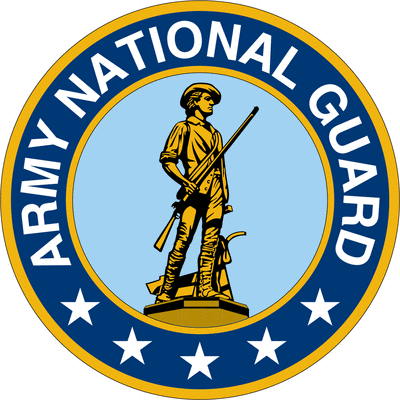Pilots And Crews Train Each Spring To Prepare For Wildfire Season
New York Army National Guard UH-60 pilots and crew chiefs teamed with New York State Department of Environmental Conservation (DEC) Rangers last month to practice using the $21 million helicopters to fight wildfires on Long Island. Four pilots and two crew chiefs based in Ronkonkoma used two Black Hawk helicopters assigned to the 3rd Battalion, 142nd Aviation, to certify in the skills needed to dip a collapsible bucket into a lake or stream, pick up 600 gallons of water, then fly the 2.8-ton load and dump it on a wildfire.

Pilots and crews train each spring to prepare for wildfire season, said Chief Warrant Officer 4 Robert Hansen, an instructor pilot in the unit. To get more out of the training, the aviators invited three DEC Rangers to join the exercise, Hansen said. The Rangers conducted a ground school on firefighting techniques.
The Rangers talked with the Soldiers about fire behavior and the tactics and terminology firefighters use, how the speed of the helicopter affects the dispersion of water onto a fire and how to work with teams on the ground.
That information ensures the aircrews know what teams on the ground need, explained Chief Warrant Officer 5 Peter Haack, an instructor pilot. The crews hooked up the large orange buckets under their helicopters and practiced collecting water from Wildwood Lake and then flying to a simulated fire location and dumping the water.
The Rangers climbed on board the UH-60s to provide advice while in the air. The full bucket swinging beneath the helicopter changes the way the helicopter flies, so practice is necessary, Haack said.
“When you have all that weight, you only have a small margin of error before you’re over-torquing the aircraft,” said 1st Lt. Alex Carrasquillo, one of the pilots. “You have to be really careful the way you control it with all that weight.” He is used to flying with cargo underneath the helicopter, known as a sling-load, but using a bucket is more challenging, Carrasquillo said.
The sling-load weight remains the same. But the weight of the bucket changes as the water is added and then released.
Capt. Tim Byrnes, one of the Rangers, said the annual training with the Army Guard pilots is important for his team because the Army Guard helicopters at Ronkonkoma are the closet air asset for fighting wildfires on Long Island.
“It’s crucial because when this asset is deployed on a fire, it is vital to be able to coordinate,” Byrnes said. “It’s the communication between what’s happening on the ground and the pilots in the air and having those pilots have the skill to operate with that kind of weight underneath the aircraft and be able to put water where it’s needed.”
“Training is the only way you’re going to get through those hurdles. It’s crucial,” Byrnes said.

The concern on eastern Long Island is that the 100,000 acres known as the Pine Barrens – sandy soil covered with low pine trees and shrubs –can burn out of control. A 1995 fire destroyed 7,000 acres of Pine Barrens. Homes and businesses were damaged and 400 people had to evacuate. In 2012, a fire near Brookhaven National Laboratory destroyed 1,100 acres.
The Riverhead water-bucket training was the fourth conducted by New York Army National Guard helicopter pilots this spring.
Aircrews based in Rochester conducted fire bucket training with a CH-47 over Lake Erie May 5, while pilots and crew chiefs based near Albany conducted training with UH-60s May 13.
On May 19, aircraft and aircrew from New York and Connecticut teamed up for training at Camp Smith Training Site near Peekskill, using the Hudson River as a water source and target. The last time New York National Guard Helicopters deployed to fight fires was in July 2018, for a fire in Flatrock State Forest north of Plattsburgh. Byrnes said the New York National Guard aviators are an important part of New York’s wildfire fighting team.
“For the 20-plus years I have been working with these guys, they have always been an excellent asset and a great team player,” Byrnes said. “We have a great respect for what they do.” [ANN salutes Eric Durr and Capt. Joseph Nolan of the New York National Guard for the story]
 Airbus Racer Helicopter Demonstrator First Flight Part of Clean Sky 2 Initiative
Airbus Racer Helicopter Demonstrator First Flight Part of Clean Sky 2 Initiative Diamond's Electric DA40 Finds Fans at Dübendorf
Diamond's Electric DA40 Finds Fans at Dübendorf ANN's Daily Aero-Term (04.23.24): Line Up And Wait (LUAW)
ANN's Daily Aero-Term (04.23.24): Line Up And Wait (LUAW) NTSB Final Report: Extra Flugzeugbau GMBH EA300/L
NTSB Final Report: Extra Flugzeugbau GMBH EA300/L Classic Aero-TV: 'Never Give Up' - Advice From Two of FedEx's Female Captains
Classic Aero-TV: 'Never Give Up' - Advice From Two of FedEx's Female Captains




